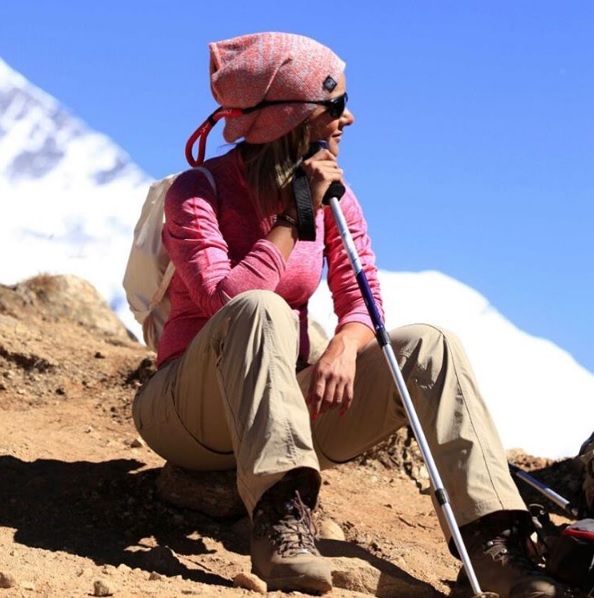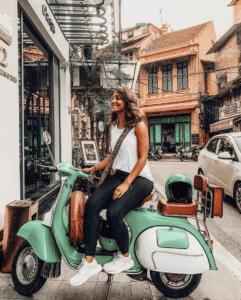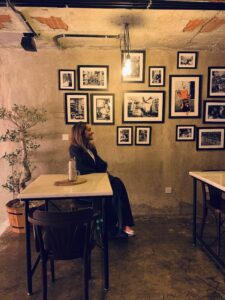Preparing for Everest was not the easiest. Aside from the training, a lot of things had to be taken into consideration, and gear to be prepared.
Everest Base Camp Trekking is one of the most famous trekking destinations for adventure-seekers in Nepal.
I’m writing this post after completing Everest Basecamp Trek. As a matter of fact, I’m writing it right now after having spent less than 24 hours in Kuwait after my arrival from my 14 days trip to Nepal. Regarding Nepal, and the trek itself, I will write it in another post. This post will be dedicated towards prepping and gear.
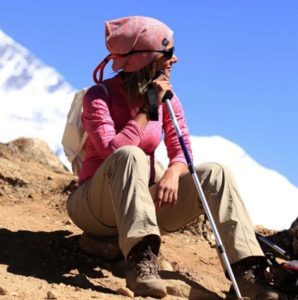
What do you need?
Hiking Boots/Shoes:
- First things first, you need a good pair of hiking shoes/boots with ankle support. Preferably water-proof. The most recommended brand I hear is Salomon. However, go and explore what best suits you.
- You will also need another shoes, for when you’re not trekking. You need to rest your feet from the long hours of walks. If it’s a cold season like when we went (N0vember), I do advise that you take something to warm your feet (the cold is HARSH).
- Socks: myself, I packed 6 pairs of heavy socks/wool, and 6 pairs of liner socks.
Duffle Bags:
- 2 Duffle Bags: You need two duffle bags. Keep in mind, for internal flights between Kathmandu and Lukla they allow only 15 KG. I recommend you to do as we did: One Duffle to be kept behind at the hotel in Kathmandu with all your clean clothes for after the trek. Another duffle with all what you need for EBC.
Trekking Backpack
- You need a trekking backpack to carry your essentials while on the trek. Things you should have in your backpack while trekking:
- Water
- Camera/GoPro
- Wipes
- Jacket/Wind breaker
- Sticks/Poles
- Sunblock
- Lip Sunblock
- Swiss Knife (Just in case you need it)
Sleeping Bag
I got myself a -15 degrees Celsius sleeping bag. It was NOT enough. Especially in the last three tea houses, I was freezing at night I sleep with socks and my thermals. In case you get cold easily, please consider getting -20 Celsius.
In addition to the sleeping bag, you could use a Sleeping Liner. I got the Silk Sleeping Liner, it did not warm me at all. There are special warming sleeping liners, ask about those.
Clothing
We layered all the way. It’s tricky, you walk and get super hot especially when the sun is out, the minute you stop to rest it gets cold. So get something that you could easily remove, and put back whenever needed.
Generally, myself I changed clothes every 4 days.; so it really depends on your body and use.
- Tshirts (Not Cotton)
- Soft-Shell Jacket (Full-zip version)
- Insulated Jacket (Medium to heavy weight)
- Hard-Shell Jacket with a hood (Waterproof, breathable)
- Thermal Jacket/Pullover
- Fleece
- Thermal Pants (Morino is recommended)
- Fleece Pants
- Hiking Pants
- Ski Pants (Incase it snows..)
Headwear
- Head light
- 2 or 3 Bandanas that covers your ears/ Buffs could also be used as a face mask
- Sunhat was recommended, however I didn’t use one
- Sunglasses (100% UV, IR, high quality lenses designed for mountain use.
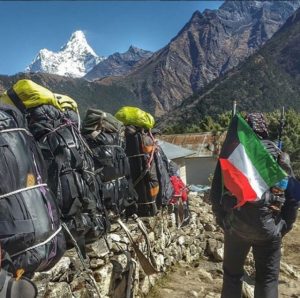
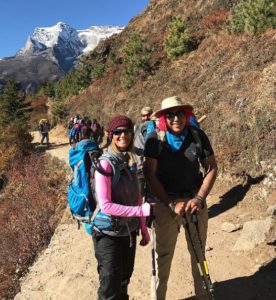
I think i pretty much covered everything except one thing.. Hygiene! At some point, it’s too cold to touch water. Be prepared!
- Towels, Wipes, Body wipes, Face wipes
- Mouth cleanse
- Toiletry Bag
- Hand Sanitizer
- Toilet Paper Roll
Don’t forget..
- Hand and Foot warmers (VERY VERY COLD AT NIGHT in the teahouses, and early in the morning before the sun comes out)
- Insulated Waterbottle with a tube to drink from the tube while you walk (much easier)
- Music/Playlist if you’d like to listen to music during the hike
- First Aid Kit
- Medication: Go to your doctor or pharmacists and get everything you might need such as: pain-killers, fever and flu pills, stomach-ache pills, diarrhea pills, altitude sickness prevention medicine if any
Anything else?
- Medical Travel Insurance
- Evacuation Insurance
- Cash for WiFi and food in tea houses (Nepalese Rupees)

